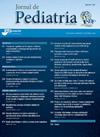质量改善倡议,以减少迟发性脓毒症在极低出生体重早产儿:一项多中心研究从巴西网络新生儿研究。
IF 2.5
4区 医学
Q1 PEDIATRICS
引用次数: 0
摘要
目的:评估巴西新生儿研究网络(BNNR)中心的质量改进项目(QI)对减少已证实的晚发型脓毒症(LOS)的影响。方法:于2021 - 2023年在12个BNNR中心进行介入研究。纳入胎龄22-36周出生、体重400-1499克、无畸形、入住NICU时间为bb0 72 h的早产儿(PT)。采用QI工具,定义4个过程指标:中心导管并发症(≤20 %);未感染婴儿停药≤48 h(≥80 %);出生后48小时内母乳表达和24小时内肠内喂养(≥80 %);第11天完全肠内喂养,不进行肠外营养(≥70 %)。结果是根据每个中心的基线(2020年)按比例降低LOS。对三个时期的指标进行了描述性分析。结果:共纳入PT < 1500 g者1993例。一半的中心达到了脐导管并发症的目标,92%的中心达到了经皮导管的目标 %。67% %未感染婴儿在48小时内停用抗生素。早期母乳表达率为44. %,肠内喂养率为75. %。58% %在第11天达到完全肠内营养,无需肠外支持。在67% %的中心,LOS发生率下降,其中一半达到了目标,总体降低18.5% %。结论:该项目降低了大多数中心的LOS,尽管一些临床实践仍需改进。它展示了一种可重复的、低成本的策略,有可能指导其他面临高脓毒症发病率的新生儿单位。本文章由计算机程序翻译,如有差异,请以英文原文为准。
Quality improvement initiative to reduce late-onset sepsis in very low birth weight preterm infants: a multicenter study from the Brazilian network on neonatal research
Objective
To evaluate the impact of a quality improvement project (QI) on reducing proven late-onset sepsis (LOS) in centers of the Brazilian Network Neonatal Research (BNNR).
Method
An interventional study conducted in 12 BNNR centers from 2021 to 2023. Included preterm infants (PT) born at 22–36 weeks' gestational age, weighing 400–1499 grams, without malformations, and admitted to the NICU for > 72 h. QI tools were used and four process indicators were defined: central catheter complication (≤ 20 %); antibiotic discontinuation ≤48 h in non-infected infants (≥ 80 %); breast milk expression within the first 48 h and enteral feeding within the first 24 h of life (≥ 80 %); full enteral feeding without parenteral nutrition by day 11 (≥ 70 %). The outcome was the proportional reduction of LOS according to each center’s baseline (2020). Indicators were analyzed descriptively across three periods.
Results
A total of 1993 PT < 1500 grams were included. Half of the centers achieved the target for umbilical catheter complications, and 92 % for percutaneous catheters. Antibiotics were discontinued within 48 h in 67 % of non-infected infants. Early breast milk expression and enteral feeding were achieved in 44 % and 75 % of cases, respectively. 58 % achieved full enteral nutrition without parenteral support by day 11. LOS incidence declined in 67 % of centers, and half met their targets, with an overall 18.5 % reduction.
Conclusions
The project reduced LOS in most centers, although some clinical practices still need improvement. It demonstrates a reproducible, low-cost strategy with the potential to guide other neonatal units facing high sepsis incidence.
求助全文
通过发布文献求助,成功后即可免费获取论文全文。
去求助
来源期刊

Jornal de pediatria
医学-小儿科
CiteScore
5.60
自引率
3.00%
发文量
93
审稿时长
43 days
期刊介绍:
Jornal de Pediatria is a bimonthly publication of the Brazilian Society of Pediatrics (Sociedade Brasileira de Pediatria, SBP). It has been published without interruption since 1934. Jornal de Pediatria publishes original articles and review articles covering various areas in the field of pediatrics. By publishing relevant scientific contributions, Jornal de Pediatria aims at improving the standards of pediatrics and of the healthcare provided for children and adolescents in general, as well to foster debate about health.
 求助内容:
求助内容: 应助结果提醒方式:
应助结果提醒方式:


